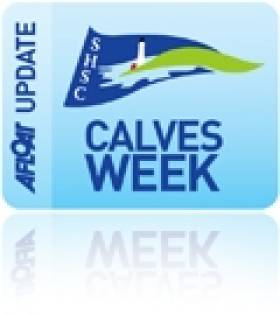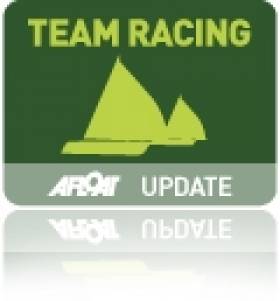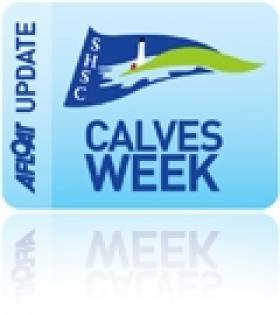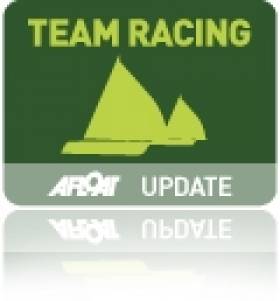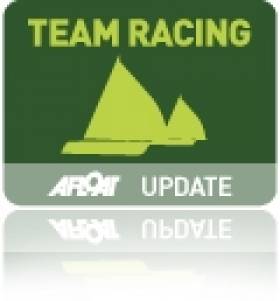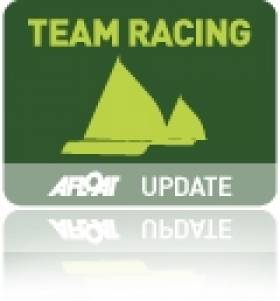Displaying items by tag: Schull
Calves Week 'Compact Format' Launches in Cork
#CALVES WEEK – The new compact format for Cork Dry Gin Calves Week 2012 will consist of a 4 day racing series, including a race around the Fastnet Rock. As previously reported on Afloat.ie the event will take place from Aug 7th - 10th to allow for visiting yachts to take part in the local regattas of Baltimore, Crookhaven and Schull.
Speaking about Cork Dry Gin's sponsorship Alan Dwyer, Commodore of Schull Harbour Sailing Club says "we are thrilled to have such a prestigious brand as Cork Dry Gin sponsoring this year's event, the new series will create a real buzz around Schull with a prize giving every night in the village".
West Cork Team Racers Win Under 21 Wilson Trophy
#WILSON TROPHY – West Cork's Schull Youth Team lifted the Under 21 trophy at the Wilson trophy at West Kirby in the UK this afternoon
Schull, one of three Irish team competing, finished the event half way down the leaderboard on eight wins. The team comprises four 18-year-olds and two 16-year-olds, all from Schull in southern Ireland, where team racing is part of their school curriculum. They competed at the ISAF Team Racing World Championship on home waters last year where they were narrowly beaten by West Kirby One (it came down to a penalty turn at the end of the deciding race). At the Wilson Trophy it was Schull Youth's turn.
"There is serious rivalry, but we beat them here - we got our revenge on their home turf," declared a satisfied Oisin O'Driscoll, a Schull Youth helm.
At one point on Saturday Schull Youth had pulled up to eighth overall, but O'Driscoll said they had made some silly mistakes due to their inexperience. "This was my first time at the Wilson Trophy – it is the most amazing team racing event ever. It is the best set-up I have ever seen. Every race is bang-bang-bang. We had over 200 races – it's incredible."
The 63rd Wilson Trophy will be remembered as the sunniest and windiest on record, but also for being the first time, in as long as anyone can remember, that competition at West Kirby Sailing Club's British Open Team Racing Championship had to be cut short mid-way through the quarter finals.
Ireland's two other teams Royal St. George YC and Howth YC finished tenth and 11th respectively. Dun Laoghaire's John Sheehy was the guest speaker at the event and Rachel McManus received the Joyce Evans Trophy. Full results table here. Below youtube footage of the race between Schull Youth and Royal Lymington YC 2012.
Because of this the final results reverted to the last complete round, or round 16 of the Wilson Trophy's Swiss league, where local favourites West Kirby Hawks had come out on top, followed by New Forest Pirates.
Racing today started at 0800 in 12 knots, the wind having backed into the west overnight. This enabled the race management team to bring the number of rounds completed up to 16, or an amazing 240 races sailed for the thirty teams taking part. Unfortunately, just as the final rounds were starting, the wind built significantly. The teams were sent back to fit smaller mainsails and the quarterfinals eventually got underway with the gathered crowd on the stadium seating adding their own unique commentary to the proceedings. Sadly the wind continued to build and with this came damage - jib tensioners and main halyards parting company and a broken rudder.
The big conditions were forecast, only for later in the afternoon, as Principle Race Officer Adam Whittle explained: "The wind came in a lot earlier than it was meant to. It was gusting 36 knots at Hilbre [the weather station nearby] and it just wasn't feasible to continue. We were having break downs and people were getting injured. It wasn't team racing – it was survival. Having sailed 16 rounds in perfect team racing conditions, I thought it would have been wrong of us to carry on."
Having suffered defeats to a US team in the last two Wilson Trophy finals, West Kirby Hawks finally came out on top for the first time since 2009.
Hawks helmsman Andy Cornah said they were right to stop racing. "The problem with these conditions is you are not team racing, you are just trying to get the boats around the course and it changes it a lot and it's not what you want."
West Kirby Hawks started the day on the back foot, a win behind Wessex Exempt and Royal Thames Red, but an excellent morning saw them complete the league in the lead, the sole team on 12 wins, ahead of New Forest Pirates, Tabby Cats, West Kirby SC and Wessex Exempt on 11.
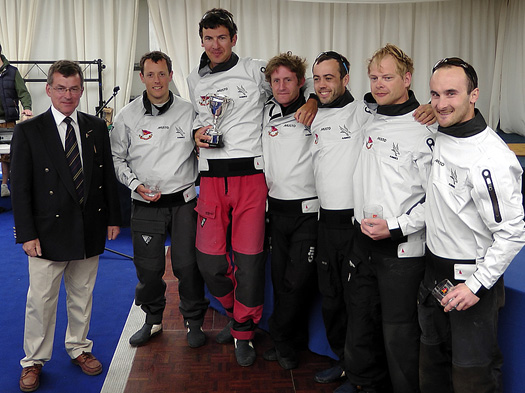
Winners West Kirby Hawks. Photo: James Boyd
"Yesterday was a little bit frustrating and we dropped a few races, which we were disappointed about," admitted Cornah. "We knew this forecast was here today and winning the league would be important, so we just forgot about yesterday and moved on and put a good series together."
West Kirby Hawks has a 'new' boat this season sailed by Matt Findlay and Toby Lewis, after Dom Johnson and Debs Steele retired following their ISAF Team Racing World Championship victory last year. However in a one-off appearance Johnson and Steele returned to this Wilson Trophy with New Forest Pirates and, clearly having lost none of their skill, came home second with Stuart and Jane Hudson and Owen Modral and Claire Wood.
Dom Johnson explained: "We are taking some time out and are not campaigning at the moment, so we took the opportunity to reform an old team we used to sail together as. My team mates haven't really done any team racing for the last four years, so it was nice to come back and do the best team racing event of the calendar and have some fun. We were really chuffed to end up with second place."
A highlight was beating the West Kirby Hawks early on yesterday, although they were subsequently beaten by the eventual victors when the two teams came head to head earlier today.
As to terminating racing, Johnson added: "It is a shame we haven't been able to finish off the event, but I think they made the right call – I snapped a rudder in the last race and it was a bit of a melee. We were at that stage of breeze where things were starting to give up. It must have been blowing over 30 knots in some of those gusts and masts and ripped sails would have been next."
Despite the weather not co-operating, West Kirby Sailing Club Commodore Chris Riley was satisfied with this year's event. "I think it has gone very well. It is a shame about the weather at the beginning and at the end, but that's sailing. This morning and Saturday the weather was perfect and we got over 200 races in and that was fantastic. We can't complain and all the competitors are very very happy. It is just a shame we didn't get the finals in."
420 Mid-Term Training Camp in Schull
Sixteen crews have so far confirmed their participation at the 420 Class's Mid-term Training Camp at Fastnet Marine and Outdoor Education Centre in Schull, County Cork.
Coaching will be provided by Irish Olympic Sailor Ross Killian, Tom Mapplebeck, Christian Birrell and double 470 World Champion Nic Asher.
Further information on the Training Camp, which runs from Monday 13th to Friday 17th February, can be found on http://www.sail420.com/
Major Cut-Back for Calves Week 2012
#CALVES WEEK – Calves week is to be cut down to a four day event this August in response to competitors requests for a shorter and less expensive event writes Claire Bateman. This year, as an alternative to the traditional event spanning a two week period, the Schull based sailing programme will consist of a four day Calves Week Championships, running from Tuesday 7th to Friday 10th of August, with the usual mix of courses taking in the Fastnet Rock and many of Carberys Hundred Isles, together with laid courses in Roaringwater Bay.
Daily prizegiving will take place on Main Street Schull where a nautical festival theme for the village is being organised by local businesses.
The traditional regattas on August Monday in Baltimore and the following Saturday and Sunday in Crookhaven and Schull will continue as stand alone events with their own courses and prizegivings being organised by the local sailing clubs.
The week will once again commence with the overnight Crosshaven/Schull race starting the activities on Friday August 3rd, while on Saturday morning August 4th the White Sail fleet will have an early start from Kinsale. Both of these races will form part of the new Scora Offshore Championships, together with the midweek Fastnet Race out of Schull.
'2k' Format Will be New Lease of Life for Team Racing
Irish team racers, and those whose college sailing days are behind them, can look forward to rediscovering the joys of a new kind of team racing writes our Correspondent, Magheramore.
The Dutch have discovered team racing. They have become very keen on two boat team racing in keel-boats with 30 teams competing in their National Championships. Realising the potential for this version of the sport a major international event is planned in September this year, and there is a bid to run an official World Championships in 2013.
An international circuit is now emerging for this discipline – now known as 2k. Events are planned on the Clyde, in Italy, Poland, England and the Netherlands. The potential is considerable. In many countries sailing centres have fleets of small one design keel-boats already used for match racing. 2K racing increases the number of days these fleets are in competitive use. There is also a well established circuit in the USA, where the Sonar is commonly used. There are even events organised especially for the more mature sailor.
This should be good news for Irish sailors. We have a long tradition of team racing, with predominately university teams competing in Firefly dinghies. In Munster, the group based around Schull Community College has provided a base for schools team racing, and the whole town did a magnificent job of hosting the Worlds last year. In addition, the Royal Alfred Yacht Club has maintained a tradition of team racing in keelboats with the Patriots Cup, not to forget the Glen class in Dun Laoghaire who compete in the Millennium Cup, a 4 boat per team event. Many graduate sailors have moved on to match racing, using the Sailfleet J80s, with some success.
The development of 2k racing is an opportunity for clubs. Team-racing, in all its forms, creates a dynamic within the club, as teams train and compete and socialise. Graduates, who seem to find the Firefly gets smaller every year, can relive the exploits of their college days without breaking the bank. As events can be graded, adult trainees can experience the joys of competitive sailing at level suited to their ability. Sailing club boats will increasing look an attractive proposition to the negative-equity generation
The initial outlay to procure a fleet of boats may seem a considerable obstacle. However, if the right boat is chosen they can have a long and useful life. There is, for instance, in Brittany, a fleet of Beneteau Class 8s that have been raced hard for 20 years and are still in use for top class competition. The Dun Laoghaire 1720s also demonstrate that there is no need to buy new boats.
The cost of a day's sailing, including maintenance and depreciation, reduces rapidly the more boats are used. If a fleet can be used for match racing, 2k racing and adult training then the number of days sailed should sufficient to cover these costs.
With moves afoot to further develop junior and schools team racing this most social version of the sport is a true "Sport for Life" with the added advantage for sailors (and their parents!) of being able to compete at the highest level without the strain of owning a boat. It is now possible to envisage a career in sailing progressing from beginners sailing courses through junior team racing in Picos, then Fireflies or similar, with the prospect of travel to the UK, the USA or the Eurosaf Championships on the lagoon in Venice. After college racing and a foray in to the UK circuit (and further afield) a move to keel-boats would allow sailors to continue to race almost indefinitely.
All in all, the Dutch initiative to develop team racing in keelboats is to be welcomed. Irish team racers, and especially those whose college days are behind them, can look forward to rediscovering the joys of the squeeze, the mark trap and the sweet sound of the umpire's whistle! Anyone for a trip to the Low Country...?
Hotel and Apartments With Views of Schull Harbour On The Market
#WATERFRONT PROPERTY - A hotel with adjacent apartments in Schull, West Cork has come to the market with a guide price of €1.025m, PropertyPlus reports.
Located on Schull's main street, the Harbour View Hotel has pictureque views of Schull Harbour and its islands, which are very popular with tourists.
The hotel features 30 en-suite bedrooms, a bar and restaurant, breakfast room, function room and a leisure centre with swimming pool, while the eight vacant apartments are all fully fitted with timber floors.
Both hotel and apartments are offered as a single lot through joint agents Savills and James Lyons O'Keefe (Schull).
The hotel is available as a separate lot guiding at €500,000, while the eight apartments are being offered for €525,000. Rental of the apartments as a single lot will also be considered.
More details on the property, including images, can be found HERE.
Photo Exhibition: People of the Sea / Gens de la Mer
Gilles Perrin selected his subjects by visiting harbours and piers in locations such as Cobh, Baltimore, Castletownbere and Schull. The work was conducted through the Artist in residency programme at Sirius Arts Centre, Cobh and later by a similar residency position at the West Cork Arts Centre which took place over a few months in 2007 & 2008.
People of the Sea is organised in partnership with Veolia Environnement, also the name given for a new MOD70 class (Multi One Design). Veolia Environnement is one of only 12 such high-spec performance yachts which visited Dublin Bay in the summer calling to Dun Laoghaire and a transit of Dalkey Sound (PHOTO's). She was in Irish waters under the skipper Roland Jourdain and crew ahead of her first test, the Fastnet Race held in mid-August. To read more about Veolia Environnement click HERE and also www.canyousea.com/en/
The other participants of the exhibition which have lent their support are the Sirius Arts Centre, The Arts Council, Cork County Council and The West Cork Arts Centre, and iophotoworks. For more information about Perrin who has a master's Degree in photography visit www.art-contemporain.eu.org/perrin/
- Schull
- Baltimore
- Cobh
- castletownbere
- Dublin Bay News
- Dun Laoghaire Harbour
- Fishing News
- Cork County Council
- Sailing news
- Dalkey Sound
- Veolia Environnement
- French Photographer Gilles Perrin
- Gilles Perrin
- People of the Sea/Gens de la Mer
- Alliance Francaise Dublin
- French Cultural Centre Dublin
- Irish Fishing Harbours
- Sirius Arts Centre
- The Arts Council
- West Cork Arts Centre
- The Fastnet Race
- MOD70 class
- Multi One Design
- Irish Fishing Industry
- Roland Jourdain
West Kirby Teams Top ISAF Worlds in Schull
Saturday's racing in the ISAF World Team Racing Championships in Schull Harbour began in light southwesterly winds which developed into a fresh northwesterly by late morning. First action was the semi-final stages of the World Youth Championship.
Here, the host club Schull Community College, representing Ireland, took on Sevenoaks (GBRY2) while the in form Spanish team from Barcelona took on the top ranked British team West Kirby Youth (GBRY1),each in a five race sail off for a place in the World Final. Schull opened with two winning combinations but Sevenoaks hit back ,winning the third with a 1,3,4 combination. However, Schull C.C. took the fourth race to clinch a place in the final.

In the second semi the Spanish opened with a flourish and had two wins under their belt before West Kirby Youth seemed to realise they were in a World semi-final and looking defeat in the face. Their backlash came hard and fast. They took the next two
races to level the match and in a dramatic fifth race decider, in which the Spanish team fought to the finish, they secured their final place.
There was huge local anticipation and excitement entering the final with the host club facing the possibility of a World Youth title. However ,they had a shaky start losing the first of the five races.This brought about a loss of composure and with a few penalty umpiring calls going against them, and deservedly so, they forfeited the second race also to a humbling 1,2,3, combination from the British team. A lesser team might have caved in at this stage, but they rallied and hit back, winning the third and fourth races.The final deciding race was contested with passion ,commitment and no little skill, with the home team looking like they would just steal the march with a winning combination approaching the finish, but a finish line infringement cost them the race and the title. West Kirby Youth( GBR3) are the World Youth Team Racing Champions 2011, a tribute to their skill, consistency and discipline throughout this World Championships.
The third place sail off between the Spanish team and Sevenoaks (GBRY2) resulted in a win for the Spanish who, together with the first and second placed youth teams,joined the five Open qualifiers who made the cut, in the Open quarter finals.
This was sailed as a round robin, with the four top ranked teams from the USA and Great Britain making it to the semi- finals, namely, NCYC Team Extreme (USA1), Woonsocket Rockets (USA2), West Kirby Hawks( GBR1) and Wessex Exempt (GBR2). The placings meant that both USA and British semi – finalists were pitted against each other in the penultimate round ensuring a Britain v USA final.
At this stage form and consistency came to the fore with Team Extreme and West Kirby Hawks securing their final berths with three straight wins over their fellow countrymen .
West Kirby Hawks attacked early on and took the first race of the final with a convincing 1,2,3 win. Team Extreme hit back taking the second 1,2,5. The third race proved crucial with Hawks' master tactician Andy Cornah, king of the Championship, working himself and Dom Johnson into 1,2 positions to snatch the win. This proved the race that smashed the American challenge as Team Extreme's Zach Brown was over at the start in the fourth and The Hawks stole in at 1,2,3 , a lead they didn't relinquish. At three races to one the Championship was over and West Kirby Hawks, Great Britain's top ranked team racers ,are worthy ISAF World Team Racing
Champions 2011 and have avenged their defeat by USA's Team Extreme in the British Open Team Racing Wilson Trophy Final back in May of this year. The bronze medallists are Woonsocket Rockets (USA2) who defeated Wessex Exempt(GBR2) with three straight wins in the sail off for third place.
RESULTS
OPEN WORLD CHAMPIONSHIP :
1. West Kirby Hawks ( GBR1)
Helms: Andy Cornah, Ben Field, Dom Johnson.
Crews: Hamish Walker , Tom Foster, Deborah Steele.
2. NYYC Team Extreme (USA1)
Helms: Zach Brown, Peter Levesque, Stuart Mcnay
Crews: Emmet Smith, Marla Menninger, Michael Hession.
3. Woonsocket Rockets (USA2)
Helms: Joel Hanneman, Brian Kamilar, Justin Law.
Crews: Alexa Schuler, Lyndsey Gibbons- Neff, Adrienne Patterson.
YOUTH WORLD CHAMPIONSHIP:
1. West Kirby Youth ( GBRY1)
Helms: Cameron Douglas, Ben Robinson,Sophie Shepherd.
Crews: Sarah Lombard, Charlie Fitzgerald, FreddyWilliams.
2. Schull Community College (IRLY3)
Helms: Conner Miller, Oisin O' Driscoll, Jay Stacey
Crews: Ellen O' Regan, Katie Moynihan, Kasper Snashall.
3. Spain (ESPY1)
Helms; Carlos Robles, Adriana Rodes, Jordi Xammer.
Crews: Florian Trittel, Lucia Brugman, Alex Claville.
West Kirby Team on Top at Schull ISAF Worlds
At the end of racing on day two of the Sailing World Team Racing Championships in Schull Harbour top ranked British team West Kirby Hawks finished first in the pecking order. In an exciting head to head they smashed the early challenge of second ranked fellow countrymen, the British Universities Sailing Association (BUSA) team. BUSA has challenged strongly in the competition to date showing momentum and skill in putting together winning combinations but, in what was probably the best race in the competition so far, West Kirby Hawks came out on top with a 1, 2, 6 combination. USA Team Extreme, yesterday's leaders, maintained their excellent performance in the Championships, suffering just one defeat in the second day, bringing their tally in the competition so far to 20 wins from 22 races.
Ireland’s three teams competing in the senior event slipped into the bottom half of the 12-nation event yesterday, led by the Royal St George YC team.
This makes them joint leaders with West Kirby Hawks (GBR) with BUSA (GBR) and second USA team the Rockets from Newport, Rhode Island, in third and fourth positions. The best of the Irish teams are in seventh and eighth positions currently, but there is still a lot to play for, with another full round robin of racing to take place on day three, before the final places are decided.
In the Youth World Championship, the Spanish team from Barcelona maintained their top spot on the league table, suffering only one defeat in the second day of racing at the hands of West Kirby Youth, the top ranked British team. Irish Youth Champions, Schull Community College, sacrificed their joint top position, suffering two early defeats, the Spaniards gaining revenge for their defeat by Schull yesterday and West Kirby Youth also winning over them.
These three teams now dominate the Youth Championship table. Spain are in the top position with 12 wins from 14 races so far, Schull Community College next with 11 wins from 14 followed by British teams, West Kirby Youth and Sevenoaks, both with 9 from 14.
ISAF World Team Racing Gets Underway in Schull
Full championship racing got under way in Schull Harbour yesterday as twelve international sailing teams contest the ISAF Open World Team Racing Championship and eight compete for the Youth Worlds.
The first day of full competitive racing took place in perfect conditions with a strong easterly breeze,which gradually swung southeast , allowing for a full round robin of 96 scheduled races to be completed on the day. At this early stage of competition, the top four places in the Open Championship are occupied by American and British teams.
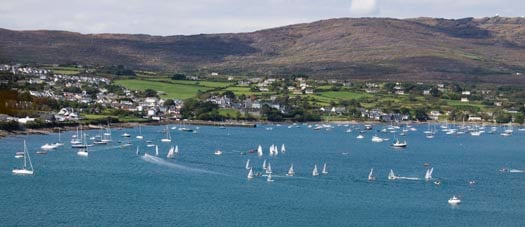
The American first team ,NYCC Team Extreme, this year's winners of the Wilson Trophy British Open Team Racing Championship, dominated exchanges with ten wins from eleven races. Two British teams, the British University Sailing Association (BUSA) team and West Kirby Hawks share the second and third spots with nine wins from ten races and USA team The Rockets from Newport, Rhode Island, in fourth place on the round robin table.
In the Youth Worlds section of the event, the Spanish team proved to be the surprise package on the first day , winning all their races until defeated by the Irish Youth Champions, Schull Community College, in their final race. This resulted in both these teams jointly topping the table at the the end of the first day's racing.
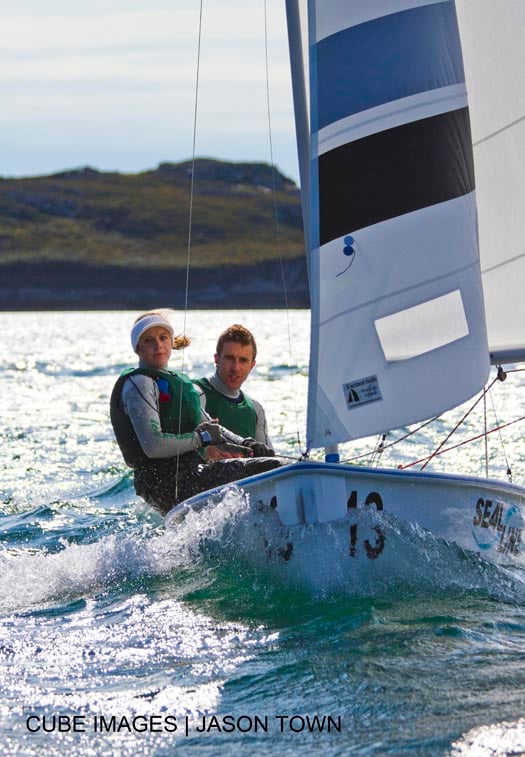
The Official Opening of the Championship took place on Tuesday Evening, performed by Mr. Tomasz Holc, Vice-president of the International Sailing Federation, ISAF, with the hoisting of the ISAF flag and the flags of the competing nations. A highlight of the evening was a performance for the assembled teams, officials, sponsors and guests by internationally famous accordion virtuoso, Liam O' Connor, of Lord of the Dance fame and now touring internationally with his own show.





























